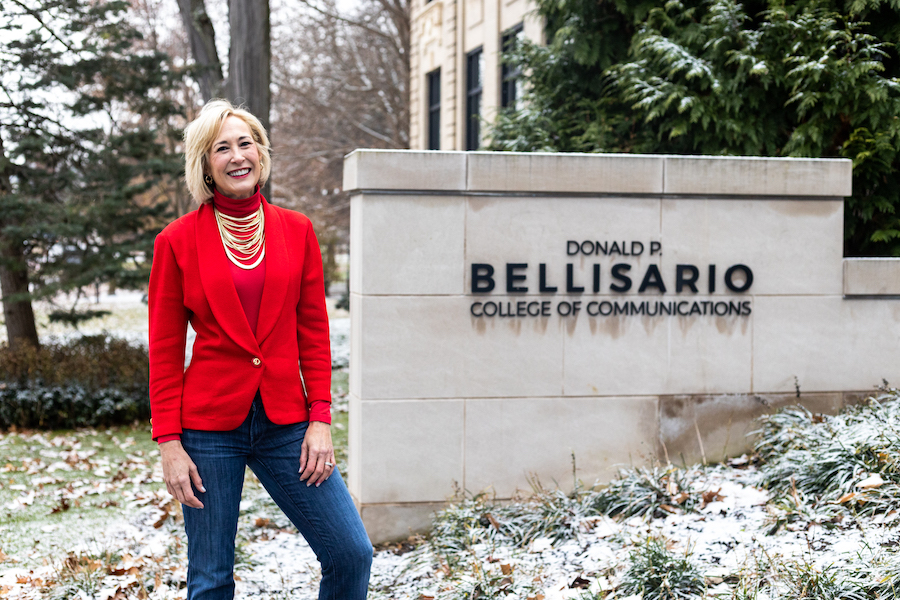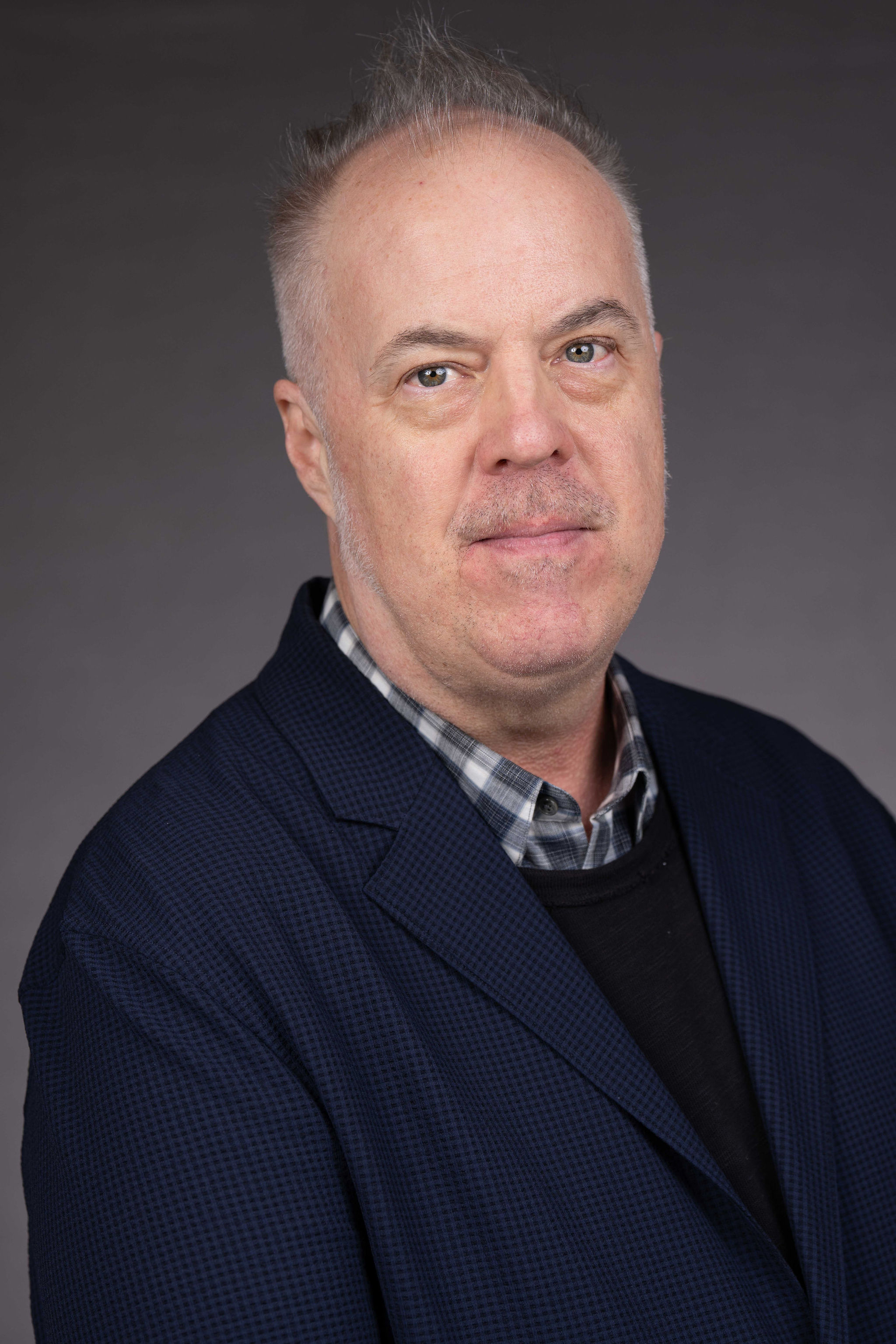Penn State Dean Prepares Students for the Future
By John Elsasser
May 2022
Marie Hardin is dean of the largest nationally accredited mass communication program in the United States — the Donald P. Bellisario College of Communications at Penn State University. She spoke with Strategies & Tactics about preparing students for an ever-changing media landscape, forecasting the future of PR education and addressing misinformation and disinformation.
You are a passionate marathon runner. How does your devotion to early-morning runs inform your approach to leadership?
I often draw parallels between running and the leadership qualities and habits I want to cultivate. Perhaps the biggest one is this: resilience. When I’m training for a marathon, I have to get out there. The trail — the same one I’ve run many times — awaits. I need to put the time in and get my muscles used to the mileage, and there’s nothing particularly exciting about that. It’s tempting, when the weather is less-than-ideal, to skip it.
But I know that making myself lace up and put one foot in front of the other will ultimately pay off. I love the sense of accomplishment! The same is true for leadership. You’ve got to get up every day and do what needs to be done, always keeping an eye on bigger goals. But attending to the small steps is essential to reaching the big milestones.
Of the four departments within the Donald P. Bellisario College of Communications, which do you think has experienced the most turbulence as a career path in recent years?
I love this question because in it is the recognition that there has been tremendous change across all of these fields. But there is no doubt in my mind that “turbulence” is the descriptor most apt for journalism. None of the other departments have had to deal with existential questions the way journalism has. We don’t get questions like, “Is advertising dead?” or “Are movies a thing of the past?” like we do from parents and colleagues like we do about journalism.
Of course, journalism as a practice is far from dead! People consume more news than they ever have. But journalism as a “Fourth Estate” that serves the public good is in peril. The quality and quantity of local, public-service journalism has diminished dramatically, and misinformation, fed by algorithms that push it in front of us, continues to increase. I think these factors can also make journalism a risky and unpredictable career path in the minds of many young people.
All that said: I’ve been heartened and impressed by the many students who are committed to the principles and ideals that journalism requires. They’re also eager to tell critical and compelling stories across multiple modes.
What are a few examples of how the departments within the Donald P. Bellisario College of Communications — Advertising/Public Relations, Film Production and Media Studies, Journalism and Telecommunications — have been retooling for an ever-evolving media landscape?
The journalism department has certainly been in “retooling” mode as it thinks about its role in serving news-poor communities across the state, integrating increasingly complex forms of audiovisual storytelling across platforms, and helping students see beyond traditional employers as they think about their careers.
But our other departments have been retooling, too. Perhaps most significant is the integration of analytics and data-driven decision-making in all majors. About five years ago, we launched a minor, open to all students in the Bellisario College, that focuses on digital-media trends and analytics. It’s incredibly popular with students, and employers tell me that it’s essential.
We also offer courses that emphasize innovation and entrepreneurship, and those are also increasingly popular. But I also want to emphasize: We may be retooling how students get ready to be competitive in a digitally focused workforce, but the foundation remains: ethics, values-driven decision-making and clear writing. That foundation is essential.
What do you see as the biggest questions facing the future of PR education?
I think educators will increasingly have to grapple with questions about the role of PR in more intentionally serving the greater social good and democratic ideals — and not in a partisan way. As we see diminishing trust in traditional public institutions to safeguard our communities and resources, other institutions will have to step up.
My sense is that this generation of students is already thinking about that. They tell me that they want to be part of the solution regarding such issues as climate change, social inequality and mis/disinformation. It’s important to them that their careers integrate that. What will that look like? Educators and practitioners need to work together in reinforcing — and then going beyond — the “Page Principles,” which are a necessary foundation.
On that front, I’m proud of the work happening in our Arthur W. Page Center for Integrity in Public Communication, which brings thought leaders, educators and scholars together to focus on solutions.
How is the proliferation of misinformation and disinformation allowing for teachable moments in the classroom?
Across all majors, faculty tell me they’re spending increasing time on these issues. We’re fortunate in that we don’t need to wait for “teachable moments” — we build lessons about the veracity of information into many of our classes.
But certainly, current events give us fresh examples. And I’d like to think our students are a little savvier and more interested in the issue of mis/disinformation than most, as they’re preparing for careers that will require them to identify and combat it.
Have you seen a reawakening of interest in teaching media literacy?
Yes! It’s exciting and essential. It’s also daunting when we think about the work that needs to be done.
Last year, I convened a group of faculty, academic and student-affairs leaders to talk about the need for every student at Penn State to graduate “news literate,” and for Penn State to be a news-literacy resource for citizens across the Commonwealth of Pennsylvania.
Everyone I invited was enthusiastic about the need for such a goal, but we also know that it’s an uphill battle. One participant told me: “I’m here because this is really important, but I don’t know how we pull it off.” Well, the way we do that is by making it a high priority across Penn State and involving multiple units — not just the communications program — in the effort.
What are some parting thoughts that you have for your spring 2022 graduates?
They are just at the beginning of a journey that is — to borrow from my favorite Beatles song — a “long and winding road.” The world is changing, and they will, too, as they mature and find their way. But they are well prepared. They know what really matters. And as long as they are true to that, they’ll make the world a better place — wherever the road takes them.
Join John Elsasser and Dean Marie Hardin for Strategies & Tactics Live, a livestream taking place May 19 (1 p.m. ET) on PRSA's LinkedIn page.



